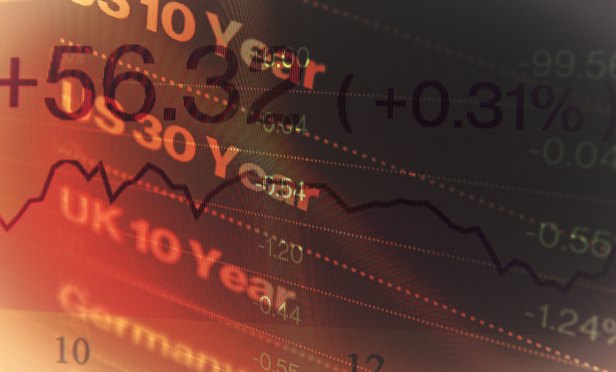
The Federal Reserve may have saved the bond market from a massive breakdown with multiple credit facilities and bond purchases over the past few weeks, but those initiatives have created other distortions, which increase risks for investors.
"A lot of companies were on the cusp when Fed spending drove prices higher and yields lower," said Richard Saperstein, chief investment officer of Treasury Partners at Hightower, in a virtual roundtable with other strategists. The Fed's actions distorted credit spreads in the bond market, essentially eliminating the key "signaling process" that the market uses in normal times to gauge value, Saperstein explained.
With that signaling gone from the market, as fundamentals deteriorate and downgrades increase, "investors have to be incredibly cautious on issues and sectors going forward," said Saperstein.
"The Fed has changed the price but not the fundamentals," said Crit Thomas, global market strategist at Touchstone Investments, who also participated in the online panel.
Still, the market has responded. Credit spreads have narrowed dramatically. The ICE BofA U.S. High Yield Index Option-Adjusted Spread, for example, has dropped from nearly 1,100 basis points on March 23 to 770 basis points on April 13, according to the Federal Reserve Bank of St. Louis.
Corporate issuers are back in the market—raising as much as $2 billion in new issues on Monday, April 13, according to The Financial Times, and the liquidity crunch that almost froze the bond market in mid-March is history.
The bond market's response to the Fed has been so strong that some of the largest investment-grade exchange-traded funds (ETFs) saw their biggest inflows in years—even though, according to Bloomberg News, the Fed hasn't purchased any investment-grade ETFs, which was part of the Secondary Market Corporate Credit Facility it announced in late March.
The Fed's foray into the corporate bond market, which also included a primary market corporate credit facility, is unprecedented, and last week it was extended to include high-yield bonds and high-yield bond ETFs. A new Main Street Lending Facility also allows banks to lend more to high-yield borrowers.
Since the economic downturn began, the Fed has slashed rates to zero; revived the quantitative easing program, this time with no limits; and expanded credit swaps with foreign central banks.
While these initiatives have certainly helped the bond market recover, the U.S. economy remains in recession and the outlook is uncertain. A U.S. recovery depends largely on the spread of Covid-19, which has already killed more than 26,000 Americans, and when and how the economy can leave lockdown.
In the meantime, the Fed is "trying to provide necessary liquidity to keep markets functioning" and "to do what's necessary to keep companies alive," said Frank Rybinski, macro strategist at Aegon Asset Management, who also participated in the virtual bond-market panel.
Most strategists recommend that bond investors stick with quality, fixed-rate, investment-grade debt. "It's a little early for high yield," said Rybinski.
"Focus on quality, because some companies won't make it through this crisis," Crit said.
Patrick Leary, chief market strategist at Incapital, an underwriter and distributor of fixed income securities, advises investors to do their homework when buying corporate bonds, including the lowest-rated investment-grade issues. Focus on: "How strong is the balance sheet, and cash flows in the near term, for three to six months—and then six months to two years? Will they be able to maintain it?"
Leary also counsels investors to "be careful with duration," referring to the bond's sensitivity to changing interest rates. Even though rates are expected to stay extremely low for a long time, at some point, the Treasury will increase long-dated issuance to finance its swelling debt load, and that will put pressure on long-dated securities, Leary said.
From: ThinkAdvisor
© Touchpoint Markets, All Rights Reserved. Request academic re-use from www.copyright.com. All other uses, submit a request to [email protected]. For more inforrmation visit Asset & Logo Licensing.




